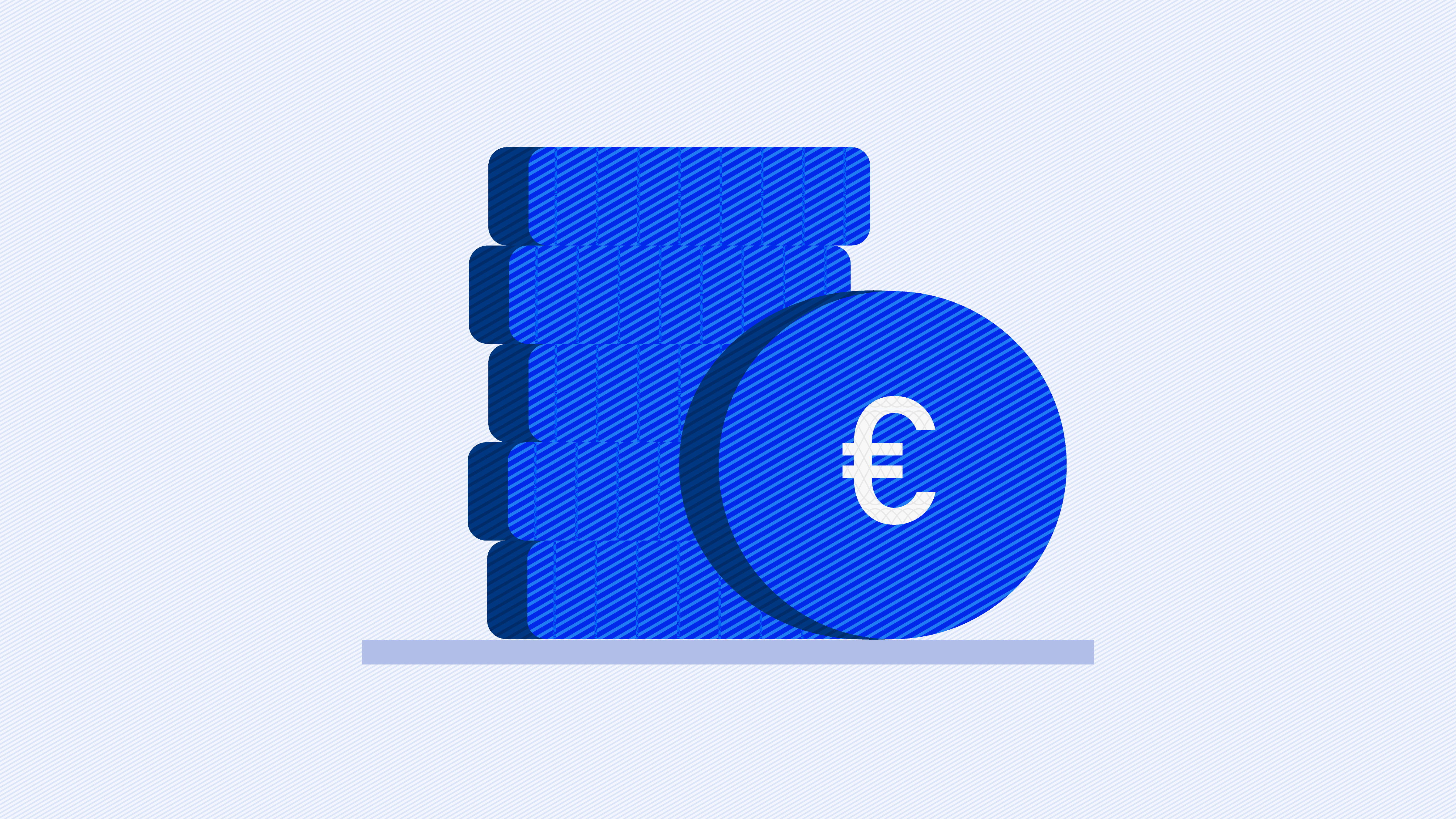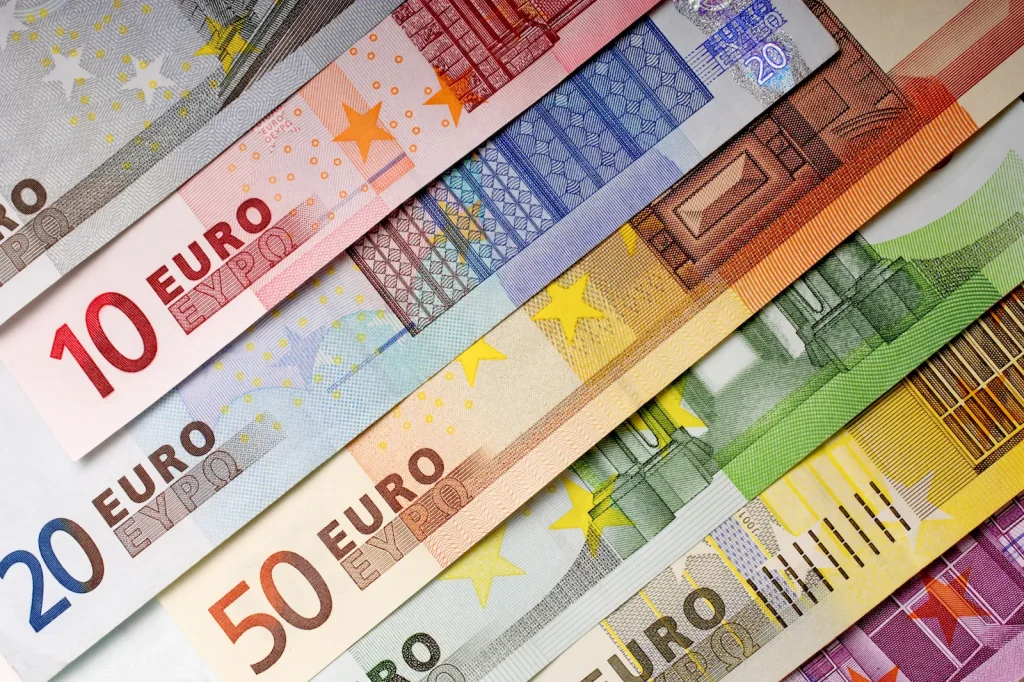
Euro: The official currency of the Eurozone.
Key takeaways
- The Euro is the official currency of the Eurozone.
- The European Central Bank is responsible for the issue, circulation, and regulation of the Euro.
- After the United States Dollar, the Euro is the second most widely held reserve currency in the world and it’s also the second most traded currency in the global foreign exchange market.

Image credit: Britannica
What is the Euro?
The Euro (€) is the official currency of the Eurozone, which is a group of European Union (EU) member states that have adopted the Euro as their common currency. They include Austria, Belgium, Croatia, Cyprus, Estonia, Finland, France, Germany, Greece, Ireland, Italy, Latvia, Lithuania, Luxembourg, Malta, the Netherlands, Portugal, Slovakia, Slovenia, and Spain. The Euro is one of the most widely used and traded currencies in the world.
It was introduced on January 1, 1999, as an electronic currency for banking and financial transactions. Euro banknotes and coins were then introduced in 2002, replacing the national currencies of 12 EU countries. These initial 12 countries were Belgium, Denmark, Germany, Ireland, Greece, Spain, France, Italy, Luxembourg, the Netherlands, Portugal and the United Kingdom. Since then, more EU member states have adopted the Euro, bringing the total number of Eurozone countries to 20.
The Euro is managed by the European Central Bank (ECB), which is responsible for setting monetary policy, issuing banknotes, and regulating the money supply within the Eurozone. It is used for a wide range of transactions, including trade, investment, and daily consumer purchases, across the member states that have adopted it.
History of the Euro
After the devastation of World War II, European countries sought to rebuild their economies and promote stability. This led to increased economic cooperation and the establishment of institutions like the Organization for European Economic Cooperation (OEEC) in 1948, which later evolved into the Organization for Economic Cooperation and Development (OECD). The Treaty of Rome established the European Economic Community (EEC), one of the precursors to the European Union (EU). The EEC aimed to create a common market and economic union among its member states.
The Delors Report outlined a three-stage plan for the Economic and Monetary Union (EMU), including the introduction of a single currency. This report laid the groundwork for the eventual creation of the Euro. The Euro was introduced as an electronic currency for banking and financial transactions, while national currencies continued to circulate for everyday transactions. On January 1, 2002, the Euro banknotes and coins were introduced, and national currencies were phased out in the 12 initial Eurozone countries. Over the years, more EU member states adopted the Euro as they met the required criteria.
It faced significant challenges during the global financial crisis of 2008 and the subsequent Eurozone debt crisis, which began in 2009. These crises tested its resilience and led to various measures and reforms to strengthen economic governance within the Eurozone.
The Euro continues to be a central element of European integration, with ongoing discussions and reforms aimed at enhancing its stability and resilience. Efforts are also made to coordinate fiscal policies and deepen economic and monetary union within the EU.
Current Euro Notes
- €5
- €10
- €20
- €50
- €100
The €200 and €500 notes while still legal tenders, are rarely used. The Euro also has coins available as the one euro cent (1c), two euro cent (2c), five euro cent (5c), ten euro cent (10c), twenty euro cent (20c), fifty euro cent (50c), one euro (€1), and two euro (€2).
Some facts about the Euro
- The Euro symbol (€) was inspired by the Greek letter epsilon (Ε) and represents the first letter of the word “Europe.” It was designed by Belgian graphic artist Alain Billiet.
- Euro banknotes are identical in design and can be used interchangeably in all Eurozone countries, regardless of where they were issued. This promotes ease of travel and trade within the Eurozone.
- After the United States Dollar, the Euro is the second most widely held reserve currency in the world. It is also the second most traded currency in the global foreign exchange market.
- Euro banknotes feature the denomination in both Latin and Greek alphabets, reflecting Europe’s linguistic diversity.
- Euro banknotes come in different sizes, with larger denominations being larger in physical dimensions. This design makes it easier for visually impaired individuals to distinguish between different denominations.
- The Euro has played a role in promoting economic stability among its member countries but has also faced challenges, such as managing economic disparities among Eurozone nations and addressing sovereign debt crises.
Conclusion
The Euro is an interesting currency and it’s a symbol of European unity. Its adoption marked a significant milestone in the economic and monetary integration of Europe. With the Euro as the second most traded currency globally, its banknotes and coins promote cross-border convenience. While it has brought many benefits, it is also challenging to maintain economic stability and cohesion among its member countries. Its continued evolution and influence in the global financial landscape make it one of the most talked about currencies.
Start building wealth on Cowrywise

ALSO READ
